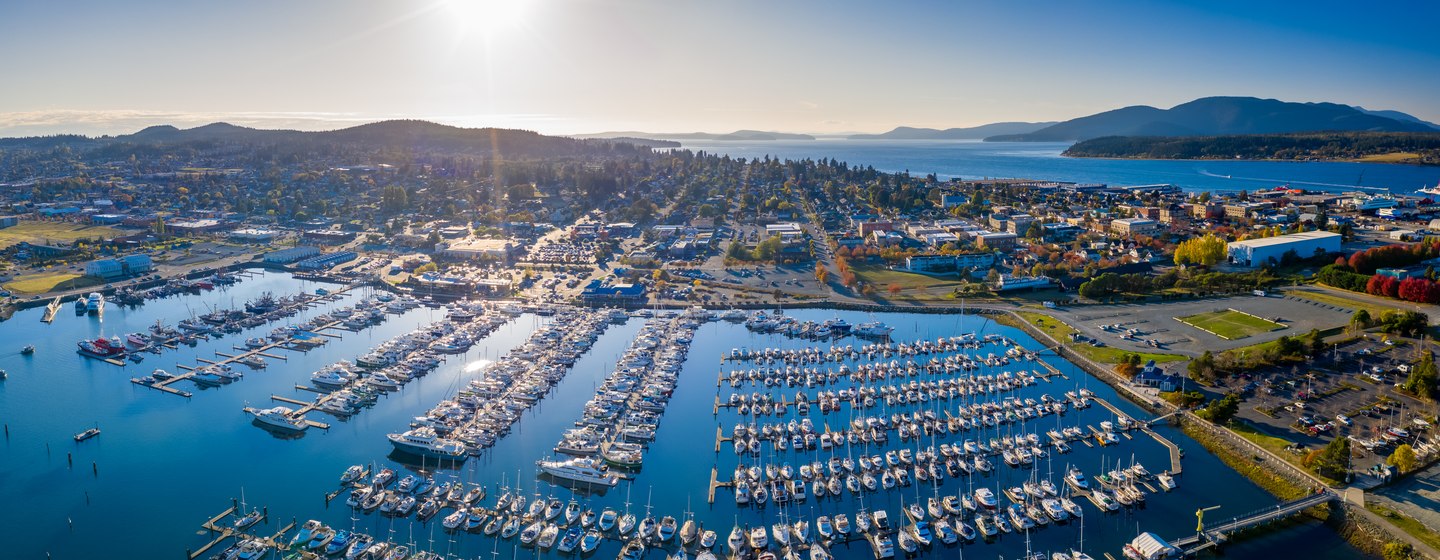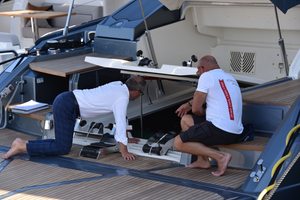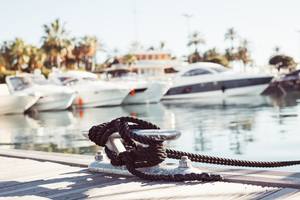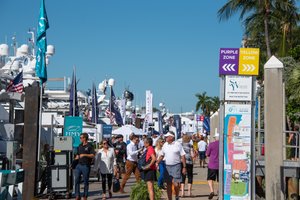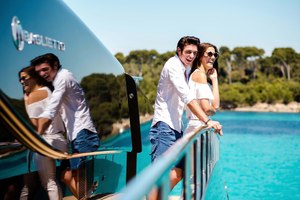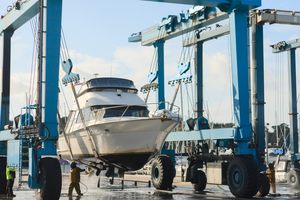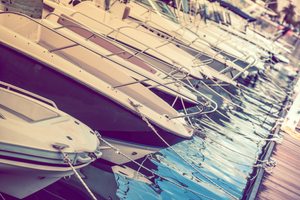Boats come in all shapes and sizes. To narrow down the options among all the boats for sale, start by determining the size of the boat needed for your intended use. Consider factors such as the number of people who will regularly be onboard, the required sleeping arrangements, and the size of available marina berths. Additionally, assess the boat’s primary use—whether for hosting parties with many guests or quiet family cruising.
This article explores the A, B, C, and D of boat size considerations, including Activity, Berths and Berthing, Cabins, Comfort, and Driving. It aims to guide buyers in their boat-buying journey and assist in focusing their search.
Buying the Right Boat Size: Start Smart
Choosing the right boat size is one of the most important decisions you'll make as a buyer. Whether you're planning weekend coastal trips, long-range cruising, or luxury entertaining, size affects everything—from comfort and capacity to docking, crew needs, and cost. We break down size categories, key measurements like length and draft, and how to match a vessel to your lifestyle and experience level.
| Boat Size Category | Length (LOA) | Beam (Width) | Draft (Depth) | Typical Passenger Capacity |
|---|---|---|---|---|
| Small (Day Boats) | 15–25 ft (4.5–7.6 m) | 6–8 ft (1.8–2.4 m) | 1–2 ft (0.3–0.6 m) | 2–6 people |
| Medium (Coastal Cruisers) | 26–40 ft (7.9–12.2 m) | 8–13 ft (2.4–4 m) | 3–5 ft (0.9–1.5 m) | 4–10 people |
| Large (Offshore Yachts) | 41–70 ft (12.5–21.3 m) | 13–20 ft (4–6.1 m) | 5–7 ft (1.5–2.1 m) | 8–12+ people |
| Superyachts | 70–120 ft (21.3–36.5 m) | 18–26 ft (5.5–8 m) | 6–10 ft (1.8–3 m) | 10–20+ people |
| Megayachts / Gigayachts | 120 ft+ (36.5 m+) | 25–40+ ft (7.6–12.2+ m) | 10+ ft (3+ m) | 20–100+ people |
How to Choose a Boat Size for Activity and Enjoyment
The activity and intended use of the boat are primary factors in determining size. For instance, if the yacht is intended for big game fishing, the size needed for extended passages, the amount of equipment, and the number of people onboard will help guide the choice, often suggesting a starter boat size between 15 to 20m (50 to 65ft).
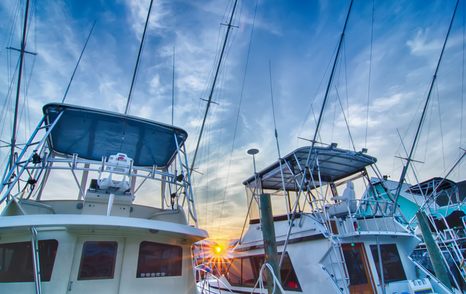
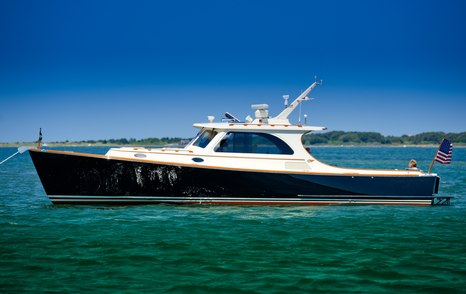
Conversely, for a small motor cruiser intended for a young family, suitable for sheltered inshore passages and occasional overnight stays with a crew of the owner plus one, a boat around 11m (36ft) with a couple of cabins and ample deck space for easy maneuvering and berthing would be ideal. A single-deck design provides safe, accessible space for sun lounging, relaxation, and dining.
Budgeting for the Right Boat Size
Do you want to budget realistically for ownership beyond the sticker price? Here is a clear, practical budget estimator table, designed to help you understand how boat size affects initial cost and annual operating expenses.
| Boat Size Category | Estimated Purchase Price (USD) | Annual Operating Cost (% of Value) | Typical Annual Cost (USD) | Key Expense Drivers |
|---|---|---|---|---|
| Small (15–25 ft) | $20,000 – $100,000 | 5–10% | $1,000 – $10,000 | Storage, fuel, insurance, minor maintenance |
| Medium (26–40 ft) | $100,000 – $500,000 | 7–12% | $7,000 – $60,000 | Docking, maintenance, electronics, insurance |
| Large (41–70 ft) | $500,000 – $2M+ | 10–15% | $50,000 – $300,000 | Crew, systems maintenance, haul-outs, upgrades |
| Superyacht (70–120 ft) | $2M – $20M+ | 10–15% | $200,000 – $3M+ | Full-time crew, marina fees, insurance, tenders |
| Megayacht (120 ft+) | $20M – $500M+ | 8–12% | $2M – $50M+ | Organization-level staffing, helideck ops, global range |
How to Choose the Boat Size: Berth and Berthing
The choice of the local marina or preferred mooring location is an important factor, as it can determine the maximum size of the boat that can be accommodated.
If the plan is to operate the boat alone or with minimal crew, size considerations should include the owner's or skipper's experience and the complexity of the marina berth or mooring.
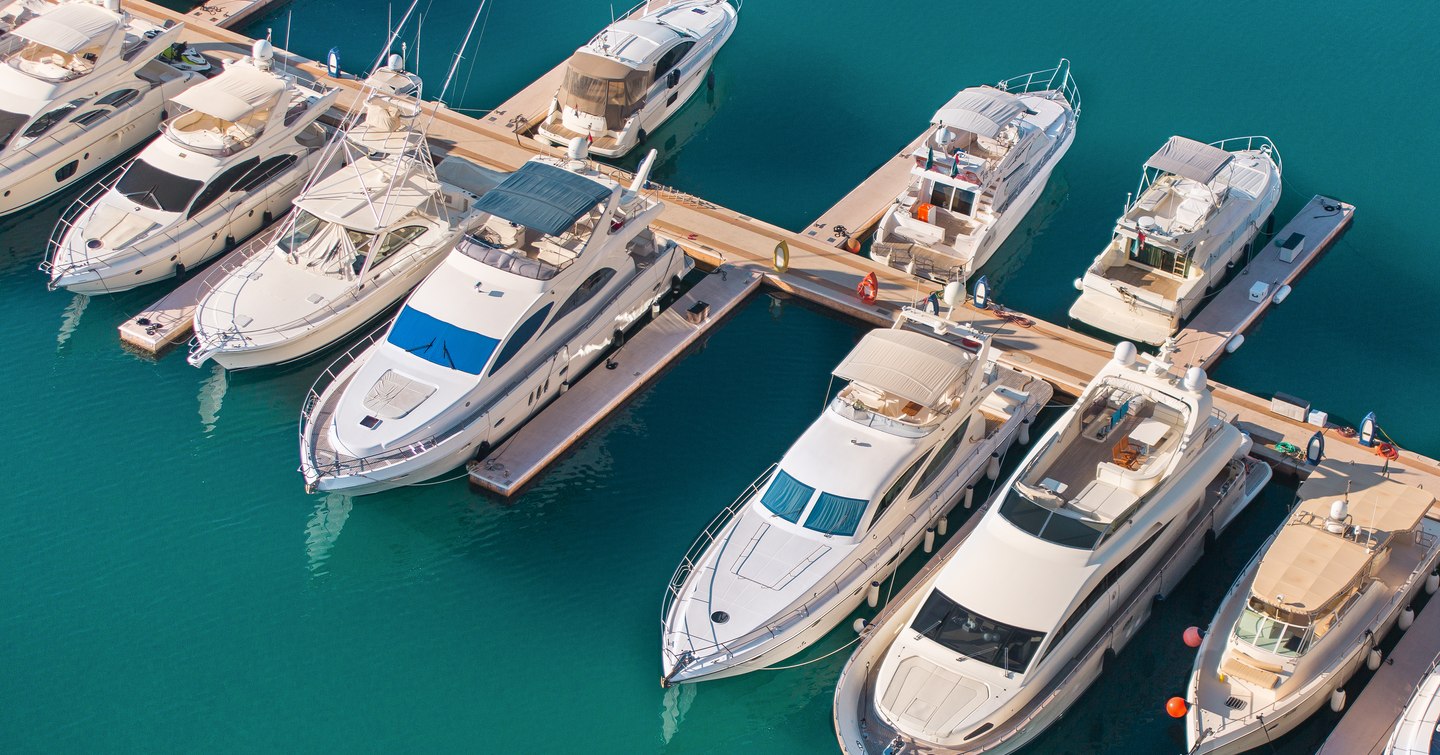
In a marina where, for example, regular katabatic winds can create challenging berthing conditions, the boat's size and ease of maneuvering become crucial. Factors such as access from the helm to mooring lines and cleats should be evaluated to ensure safe and manageable handling in varying conditions.
For short-handed operation, where ease of handling in occasional challenging conditions is important but enough space is needed for comfortable cruising with up to four people, a boat size in the 9 to 12m (30 to 40ft) range is ideal.
How to Choose Boat Size with Cabins and Comfort in Mind
The number of cabins required is a key consideration when choosing a boat size. For a group of friends planning regular cruises together, a well-balanced cabin layout is crucial for harmony and often necessitates a larger boat. However, a young family might only need a main cabin and a twin bunk, possibly with Pullman berths for added flexibility.
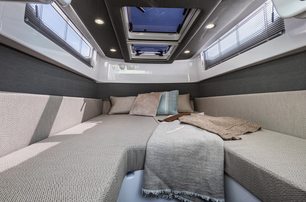
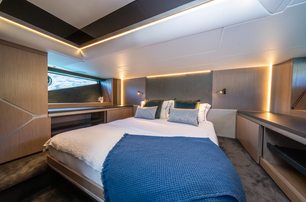
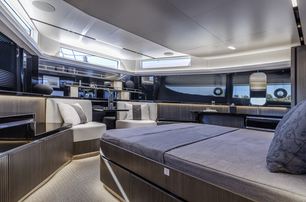
For extended voyages, cabin size and storage become more important. If planning to have a crew onboard, a separate cabin and facilities must be provided. Extended cruises also require ample galley storage and cabin stowage, increasing the boat size to accommodate luxuries such as laundry machines and additional berths for guests.
Starter boats typically feature a basic cabin salon convertible, efficiently using space in smaller boats, with the possibility of upgrading to a larger model as interest in cruising grows.
Driving - Transportation Considerations
If transportation by road is a key consideration, factors such as trailer length and insurance will likely affect the size of the boat that can be transported.
Length: The maximum combined length of the boat and trailer usually ranges between 8 to 12m (26 to 40ft), though this can vary by region.
Width: The standard maximum width for road transport is around 2.6m (8.5ft). Wider boats may require special permits.
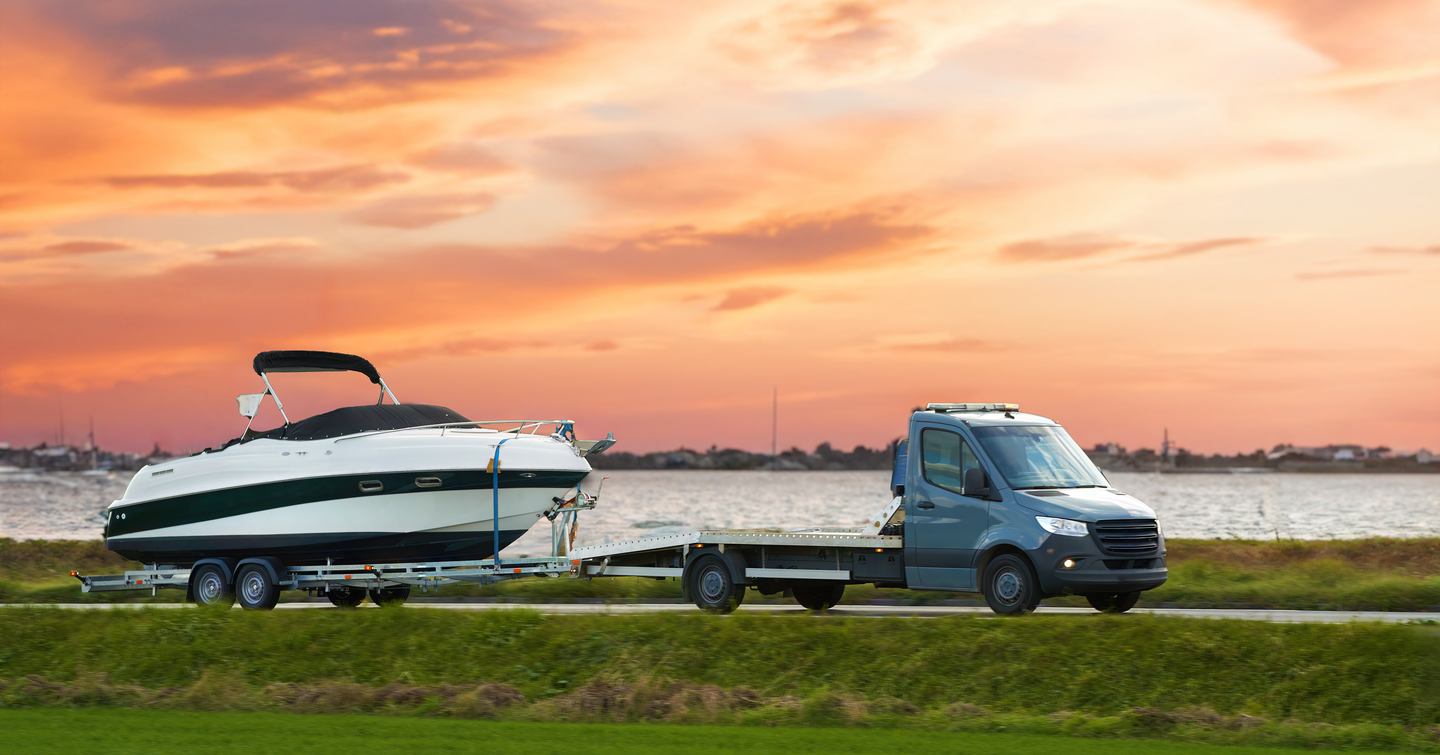
Height: The maximum height is typically around 4.3m (14ft), including the boat and trailer. Taller loads may need special arrangements.
Boat buyers are advised to always check local regulations and consult with a transport specialist to ensure compliance with specific requirements for road transport.
Practical Recommendations: Best Boat Sizes by Fuel Consumption
Fuel consumption is a major ongoing expense for any boat owner. Larger vessels not only burn more fuel due to weight and engine size, but they also operate at higher capacities and ranges. This chart offers a general overview of typical fuel burn rates across boat size categories to help you plan ahead for both cruising budgets and range expectations.
Boat Fuel Consumption Estimates by Size
| Boat Size Category | Typical Cruising Speed | Fuel Burn Rate (GPH) | Range per Fuel Load | Fuel Tank Capacity |
|---|---|---|---|---|
| Small (15–25 ft) | 20–30 knots | 5–15 gallons/hour | 100–200 NM | 40–100 gallons |
| Medium (26–40 ft) | 15–25 knots | 15–35 gallons/hour | 200–300 NM | 150–400 gallons |
| Large (41–70 ft) | 10–20 knots | 30–80 gallons/hour | 300–800 NM | 500–2,000 gallons |
| Superyacht (70–120 ft) | 10–15 knots | 100–250 gallons/hour | 1,000–3,000 NM | 3,000–10,000 gallons |
| Megayacht (120 ft+) | 12–16 knots | 250–500+ gallons/hour | 3,000–6,000+ NM | 10,000–100,000+ gallons |
How Much Does Boat Size Affect Insurance?
Boat insurance is a critical but often overlooked factor in total ownership cost. Premiums vary widely based on boat size, value, intended use (private vs. charter), and operating region. Larger vessels, especially those requiring crew or international coverage, come with proportionally higher risk—and higher premiums. The following table provides an estimate of typical annual insurance costs by size category, expressed both in dollar range and percentage of the vessel’s value.
Estimated Annual Insurance Costs by Boat Size
| Boat Size Category | Estimated Vessel Value (USD) | Typical Insurance Rate (% of Value) | Annual Premium Range (USD) | Notes |
|---|---|---|---|---|
| Small (15–25 ft) | $20K – $100K | 1.0 – 1.5% | $200 – $1,500 | Basic liability & hull coverage, inland or coastal |
| Medium (26–40 ft) | $100K – $500K | 0.8 – 1.2% | $800 – $6,000 | May include storm riders, nav limits, named operators |
| Large (41–70 ft) | $500K – $2M | 0.7 – 1.0% | $3,500 – $20,000 | Requires surveyed valuation and crew declaration |
| Superyacht (70–120 ft) | $2M – $20M+ | 0.5 – 1.0% | $10,000 – $200,000+ | Full crew cover, international navigation, commercial ops optional |
| Megayacht (120 ft+) | $20M – $500M+ | 0.3 – 0.8% | $60,000 – $4M+ | Specialist underwriting; includes war, piracy, pollution |
If you're wondering where to find the right size boat for your enjoyment, shipyards like Fairline offer a range of new and used boats for sale to suit various activities and budgets.
The Fairline F33, measuring 9.99m (32.8ft), is an excellent starter boat, perfect for day trips and occasional overnight stays. It accommodates up to eight people for cruising and provides two to four berths. The F33 can reach top speeds of 33 knots with either twin Volvo Penta V6-250 or V8-430 engines.
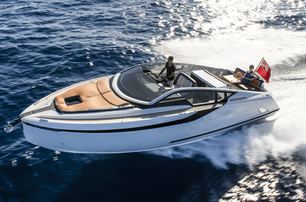
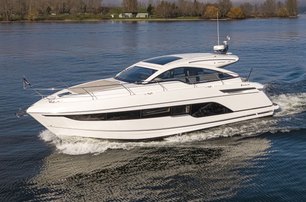
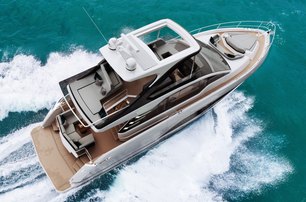
The Fairline Targa range hits the spot for the 12 to 15m (40 to 50ft) market, presenting five models tailored to differing owner requirements. These yachts feature generous foredecks, spacious cockpits, and comfortable saloons, making them ideal for accommodating higher guest numbers or extended cruising. The range includes two or three cabin options, with some models offering additional crew accommodation.
Fairline's Squadron range offers family cruisers in the 15 to 21m (50 to 68ft) category. These yachts include features like a beach club, fold-down balconies, a submersible bathing platform, and versatile modular seating to adapt to onboard needs. Powered by twin Volvo Penta diesel shaft drive engines, they achieve estimated top speeds of 31 to 32 knots. The boats can accommodate up to 16 guests, with sleeping arrangements for six to seven berths.
Use Case: Matching Boat Size to Your Lifestyle
Selecting the right boat size depends on how long you want to stay on the water, how far you plan to travel, and what amenities you consider essential.
Choosing the right boat size starts with understanding how you plan to use it. Whether you're day cruising with friends, enjoying weekend getaways, or embarking on long-range ocean voyages, different sizes offer different capabilities.
Best Boat Sizes for Day Trips
For casual outings, local harbor cruises, or beach-hopping:
Ideal Size Range: 15–30 ft (4.5–9.1 m)
Features: Open deck layouts, simple controls, limited or no sleeping accommodations
Best For: Solo boaters, couples, or families out for the afternoon
Examples: Bowriders, center consoles, RIBs, deck boats
Best Boat Sizes for Weekend Cruising
For 1–3 night trips along the coast or to nearby islands:
Ideal Size Range: 26–45 ft (8–13.7 m)
Features: Sleeping cabins, galley kitchens, enclosed heads, moderate storage
Best For: Couples, small families, or boaters wanting comfort and range
Examples: Cabin cruisers, express yachts, trawlers, sailing yachts
Best Boat Sizes for Extended Voyages
For serious cruising, bluewater sailing, or liveaboard lifestyles:
Ideal Size Range: 45 ft+ (13.7 m+)
Features: Multiple cabins, watermakers, generators, high fuel/water capacity
Best For: Full-time cruisers, ocean crossers, and offshore explorers
Examples: Catamarans, passagemakers, expedition yachts, superyachts
Key Takeaways
- Day trips require simple, small vessels that are easy to trailer or dock.
- Weekend cruisers need sleeping space, a galley, and basic comfort systems.
- Extended voyages demand larger boats with autonomy, durability, and storage.
- Matching size to use case improves safety, enjoyment, and cost efficiency.
The YachtBuyer site offers unique comparisons between yachts of similar size, make, and performance. Explore our new and used yachts for sale section for informed impartial advice.
How to Determine the Right Boat Size to Buy: Key Takeaways
| Use Case | Recommended Size Range | Passenger Capacity | Typical Features | Best For |
|---|---|---|---|---|
| Day Trips | 15–30 ft (4.5–9.1 m) | 2–6 people | Open deck, basic controls, portable toilet (if any) | Local cruising, beach hopping, easy trailering |
| Weekend Cruising | 26–45 ft (8–13.7 m) | 4–8 people | Cabins, galley, enclosed head, electronics | Coastal trips, overnighting, small family outings |
| Extended Voyages | 45–70+ ft (13.7–21+ m) | 6–12+ people | Multiple cabins, watermakers, large tanks, redundancy | Bluewater cruising, offshore passages, liveaboard |
| Luxury/Global Travel | 70–120+ ft (21–36+ m) | 10–20+ people | Crew quarters, high-range navigation, helideck (optional) | Luxury living, expedition, global charters |
